The French Quarter in New Orleans is a captivating tapestry of history, culture, and tradition. On a walking tour through this iconic district, visitors can uncover the diverse influences that have shaped its unique character over the centuries. From the imposing grandeur of St. Louis Cathedral to the intricate ironwork balconies, each step reveals a story waiting to be discovered. Engaging guides, often descended from the city’s founding families, share personal narratives that bring the past to life and inspire a deeper appreciation for the French Quarter’s enduring significance. Where will this journey through time take you?
This experience made our list of the 20 Best Walking Tours In New Orleans.
Key Points

- The French Quarter’s architecture and design reflect the blending of French, Spanish, and Creole influences over three centuries.
- Historic landmarks like the St. Louis Cathedral and Jackson Square provide insights into the city’s diverse cultural heritage.
- The Storyville district’s legalized prostitution in the 19th century contributed to the development of jazz music.
- Mardi Gras celebrations and iconic Creole cuisine are essential elements of New Orleans’ vibrant cultural identity.
- Guided tours by descendants of founding families offer authentic, personal perspectives on the French Quarter’s rich history and evolution.
Exploring New Orleans’ Diverse Heritage
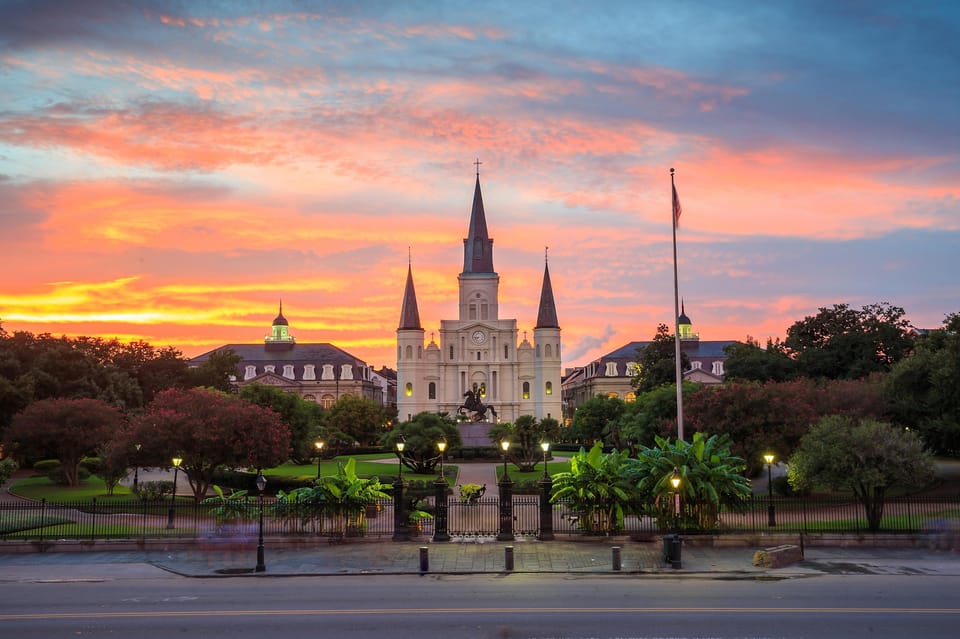
As visitors explore the French Quarter, they discover a vibrant tapestry of cultures that have shaped New Orleans over three centuries.
From the Native American tribes who first inhabited the region to the enslaved individuals, French, Spanish, Creole, and mixed-race communities, the city’s diverse heritage is woven into its very fabric.
The tour guide brings these stories to life, sharing personal and ancestral narratives that provide a unique perspective on the city’s history.
Guests learn about the profound impact of these diverse communities, from the creation of jazz to the development of iconic New Orleanian cuisine.
You can also read our reviews of more walking tours in New Orleans
Significant Sites and Architectural Significance
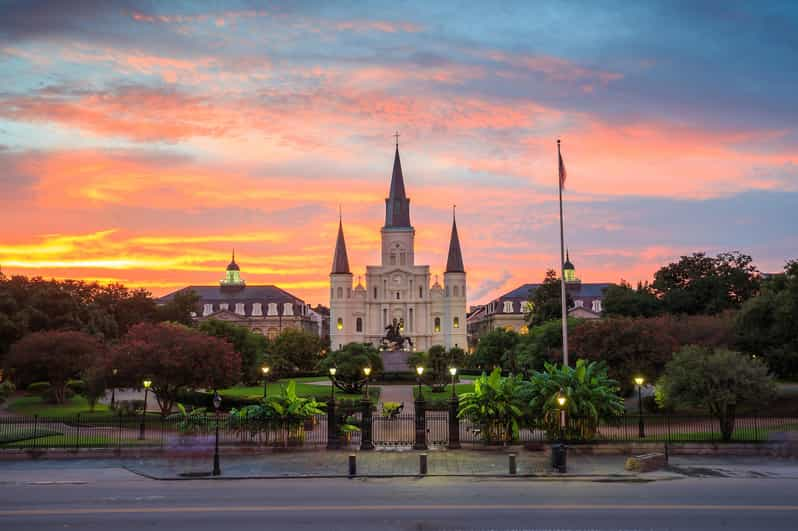
The tour takes visitors to significant sites throughout the French Quarter, including the iconic St. Louis Cathedral.
Constructed in the 18th century, the cathedral showcases the architectural influence of Spanish and French design. Guests will also discover the Mississippi River, which played a vital role in the city’s development as a major port.
The tour emphasizes the historic significance of these landmarks, providing a deeper understanding of how New Orleans’ diverse heritage is reflected in its built environment.
From the intricate ironwork balconies to the vibrant colors adorning buildings, the architectural features on display paint a vivid picture of the French Quarter’s storied past.
Legalized Prostitution and the Birth of Jazz

During the 19th century, New Orleans’ Storyville district became notorious for its legalized prostitution. This red-light district was home to many jazz musicians who found employment in the brothels and saloons. The confluence of these factors led to the birth of jazz, a quintessentially New Orleans musical genre.
| Year | Number of Brothels | Number of Jazz Musicians Employed |
|---|---|---|
| 1890 | 200 | 100 |
| 1910 | 1,500 | 500 |
| 1917 | 2,000 | 800 |
The vibrant, syncopated sounds of jazz, born from this unique environment, would ultimately become a global phenomenon, cementing New Orleans’ status as a cultural powerhouse.
Mardi Gras and Original Cuisine
New Orleans’ vibrant culture extends well beyond the jazz scene, with Mardi Gras and its unique cuisine being equally integral to the city’s identity.
The annual Mardi Gras celebration, a raucous festival of masks, parades, and revelry, has its roots in the city’s French and Spanish colonial past.
Likewise, the diverse culinary traditions of New Orleans, blending African, French, Spanish, and Creole influences, have given rise to iconic dishes like gumbo, jambalaya, and beignets.
These cultural touchstones continue to draw visitors from around the world, who come to experience the rich tapestry that defines the French Quarter and the city at large.
More Great Tours NearbyImpacts of Floods and Hurricanes
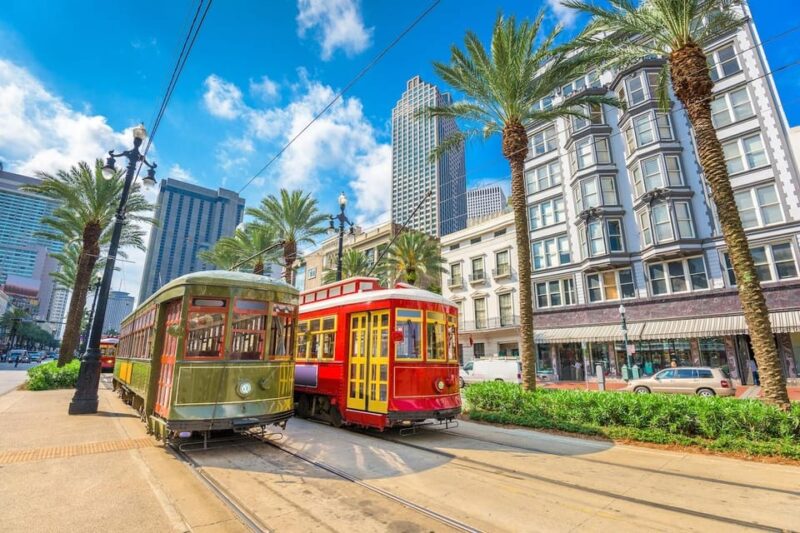
Devastating floods and hurricanes have long plagued New Orleans, leaving indelible marks on the city’s history and infrastructure.
The French Quarter, with its iconic architecture and cultural vibrancy, has been particularly vulnerable to these natural disasters. Hurricanes like Katrina in 2005 caused catastrophic damage, flooding the area and disrupting the lives of residents and businesses.
Recovery efforts have been arduous, requiring immense resources and determination. Yet, the resilience of the community shines through, as they work to preserve the unique heritage of the French Quarter in the face of these challenges.
The impact of floods and hurricanes remains a constant consideration in the ongoing evolution of this historic neighborhood.
You can also read our reviews of more historical tours in New Orleans
- French Quarter Historical Sights and Stories Walking Tour
- New Orleans Cocktail History Walking Tour in the French Quarter
- New Orleans Haunted History Ghost Tour
- New Orleans French Quarter History and Hauntings Tour
- New Orleans Small-Group Haunted History Carriage Tour
- New Orleans Cocktail and Food History Tour
Unique Perspective From Founding Families
The French Quarter’s captivating history is further brought to life through the personal insights of tour guides descended from the city’s founding families.
These guides offer a unique perspective, sharing ancestral stories and anecdotes that illuminate the city’s rich cultural tapestry. Their deep-rooted connections provide an authentic understanding of New Orleans’ past, from the intermingling of diverse communities to the architectural legacy of the Spanish and French.
Leveraging their insider knowledge, these tour leaders offer visitors an immersive experience, fostering a greater appreciation for the French Quarter’s enduring significance and the nuances that have shaped its evolution over centuries.
Glimpse Into the Past Through Historic Sites
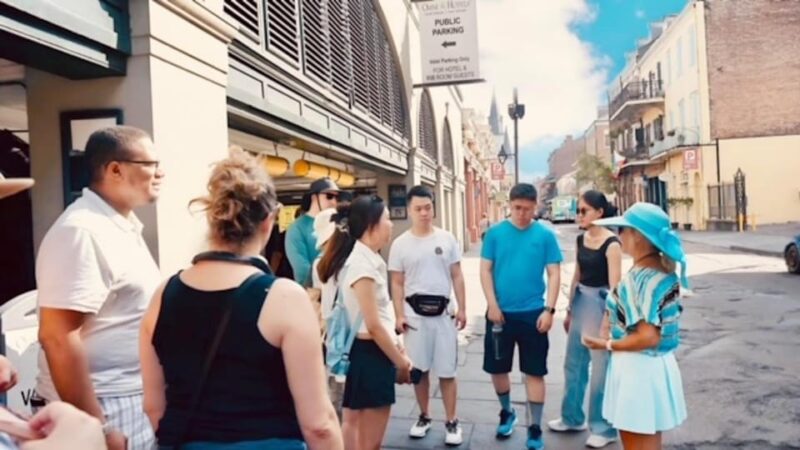
Visitors to the French Quarter can enjoy the city’s rich history by exploring numerous historic sites that date back hundreds of years. From the iconic St. Louis Cathedral to the banks of the Mississippi River, these landmarks offer a glimpse into New Orleans’ storied past. The tour’s strategic stops at key locations allow guests to understand the architectural significance of the Spanish and French designs that have endured over centuries. As they walk the streets, guests gain a deeper appreciation for the diverse cultures and communities that have shaped the city’s identity.
| Historic Site | Significance |
|---|---|
| St. Louis Cathedral | Iconic landmark built in the 18th century |
| Jackson Square | Home to art galleries and performers |
| Mississippi River | Vital waterway that supported the city’s growth |
Dining and Attraction Recommendations

At the tour’s conclusion, the guide offers mouthwatering dining and entertainment recommendations to further immerse guests in the vibrant culture of New Orleans.
These include:
-
Savoring the iconic beignets and cafe au lait at the legendary Café Du Monde, just a stone’s throw from the tour’s ending point.
-
Exploring the lively Jackson Square, where local artists and street performers captivate visitors with their talents.
-
Indulging in authentic Creole cuisine at one of the many renowned restaurants in the French Quarter, such as Brennan’s or Commander’s Palace.
These suggestions provide the perfect way to continue the exploration of New Orleans’ rich heritage and vibrant spirit.
Frequently Asked Questions
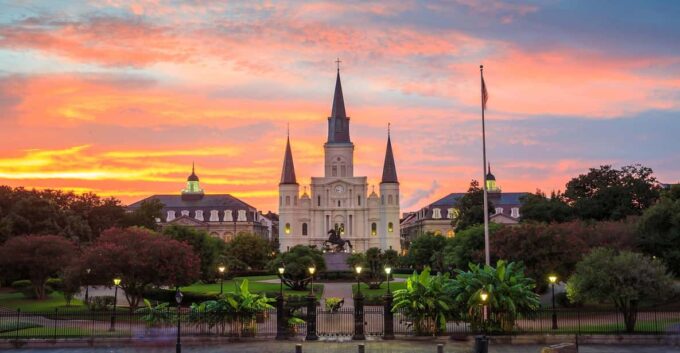
What Time of Day Does the Tour Typically Start?
The tour typically starts in the morning, with most departures scheduled between 9:00 AM and 11:00 AM. This allows ample time to explore the French Quarter before the heat of the afternoon sets in.
Is There a Limit on the Number of Participants?
The tour doesn’t have a strict limit on the number of participants, though it’s designed for small groups. Guests can expect an intimate experience with the knowledgeable guide to ensure personalized attention during the 2-hour walking tour.
Does the Tour Guide Accept Tips?
The tour guide typically accepts tips at the end of the walking tour, as it’s a common practice to reward guides who provide a memorable and informative experience. Guests are welcome to tip the guide based on their satisfaction with the tour.
Are Restroom Breaks Provided During the Tour?
The tour provides restroom breaks as needed during the 2-hour duration, allowing guests to comfortably explore the French Quarter’s history and attractions. The guide ensures the tour accommodates the group’s requirements.
Can the Tour Be Customized for Specific Interests?
The tour can be customized to accommodate specific interests. Visitors can work with the guide to focus on areas like architecture, culture, cuisine, or historical figures that align with their preferences for a personalized experience.
Recap
The French Quarter History Walking Tour offers an immersive experience, showcasing New Orleans’ rich cultural heritage shaped by diverse influences. Visitors explore iconic sites, encounter captivating architecture, and hear personal narratives from local guides. This tour provides a unique glimpse into the city’s past, from the birthplace of jazz to the enduring impact of natural disasters, leaving guests with a deeper appreciation for the Quarter’s enduring significance.
You can check availability for your dates here:More Walking Tours in New Orleans
More Tours in New Orleans
More Tour Reviews in New Orleans
Not for you? Here's more nearby things to do in New Orleans we have reviewed
- New Orleans: Garden District Walking Tour
- New Orleans: Food Tour with Seafood Boil in French Quarter
- New Orleans: Vegan Food Tour
- New Orleans: City & Cemetery Tour + Garden District Stroll
- Private Walking Ghosts Tour of the French Quarter
- After-Dark Historical Night Tour of St. Louis Cemetery No. 1
- New Orleans: Tremé African American & Creole History Tour
- French Quarter: Jackson Square to Bourbon Street Tour
- Private New Orleans Panoramic: With Drink and Souvenir
- New Orleans: French Quarter Supernatural Ghost Hunt
- New Orleans City Tour with Drink and Souvenir
- New Orleans Manchac Bayou Swamp Cruise W/ Optional Pick-Up
